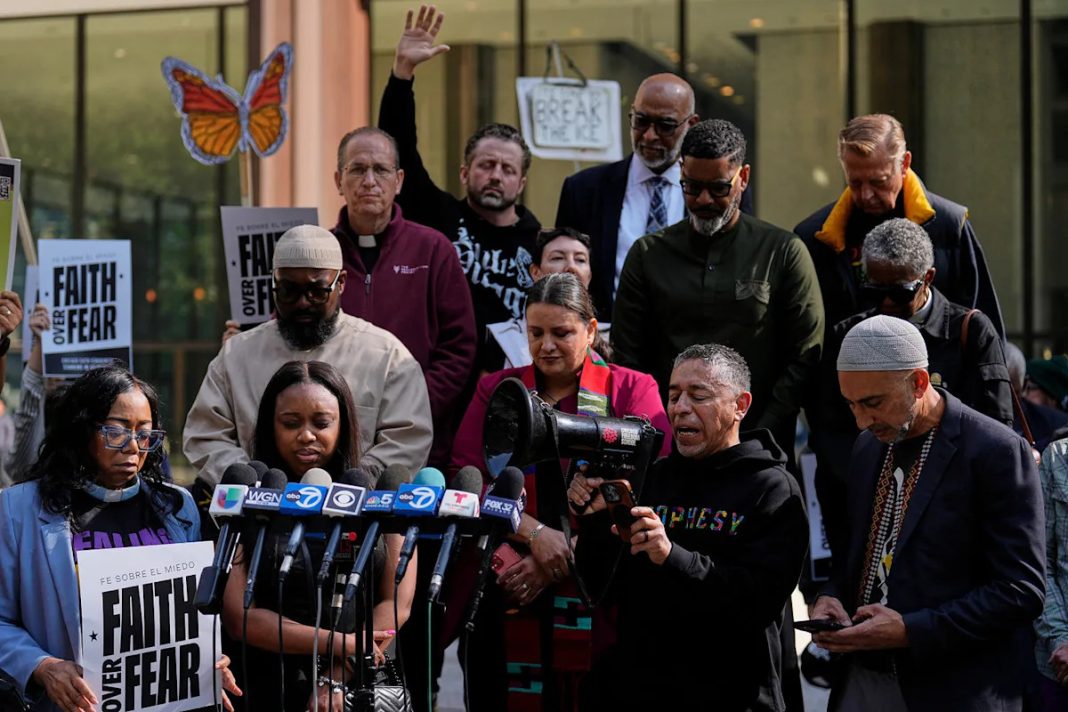On the first full day of his second term, Donald Trump attended a national prayer service in Washington, D.C., where he sat and listened to the bishop of the local Episcopal Diocese. It quickly became quite memorable: The Right Rev. Mariann Edgar Budde spoke truth to power, urging the newly inaugurated president to reconsider his attacks on marginalized communities.
Trump reacted furiously, and among Republicans he was hardly alone. House Speaker Mike Johnson and White House press secretary Karoline Leavitt condemned the bishop’s sermon, and Fox News personalities repeatedly lashed out at Budde on the air. One GOP lawmaker went so far as to introduce a congressional resolution to formally condemn her remarks — and it quickly picked up 20 Republican co-sponsors.
It served as a timely reminder that too often in GOP circles, religion is treated as something that must be celebrated, protected and respected — just so long as the faith community is telling the party what it wants to hear.
Days later, newly inaugurated Vice President JD Vance publicly clashed with the U.S. Conference of Catholic Bishops over the administration’s deportation agenda.
In the weeks and months that followed, the White House’s clashes with the faith community became even more common. In March, for example, the Republican administration undermined major Christian charities by gutting U.S. foreign aid. Around the same time, a Trump-appointed prosecutor targeted the curriculum at Georgetown Law, which is part of a Catholic university.
In June, many religious leaders also took issue with the GOP’s far-right domestic policy megabill, only to find their concerns ignored.
More recently, however, the underlying issue took a dramatic turn. The Religion News Service reported this week on developments in Chicago, where a variety of faith leaders are opposed to the administration’s immigration agenda. The report specifically highlighted what transpired when the Rev. David Black, wearing a clerical collar, stood in front of an ICE facility, with empty arms raised, and invited armed agents to repent. From the RNS report:
[W]hen Black began to lower his arms a few seconds later, the agents responded to his spiritual plea by firing pepper balls, or chemical agents that cause eye irritation and respiratory distress, video footage shows. One struck Black in the head, exploding into a puff of white pepper smoke and forcing him to his knees. Fellow demonstrators rushed to his aid, and as the pastor rubbed his face in pain, the agents continued to fire.
“We could hear them laughing,” Black added.
The same Religion News Service report noted that the Rev. Hannah Kardon, a United Methodist pastor who leads United Church of Rogers Park in Chicago, has also protested at the local ICE facility, and she too said she has been shot multiple times with pepper bullets, “including while she was praying with her eyes closed and hands lifted, wearing a clerical collar.”
Sarah Posner, a journalist with extensive experience covering the religious right movement, noted soon after: “Try to imagine if federal agents under a Democratic administration had fired pepper balls at conservative clergy protesting — let’s just say — abortion.”
Indeed, let’s not forget that it was just six months ago when Attorney General Pam Bondi convened a meeting of a task force to eradicate what the White House described as “anti-Christian bias” within the government. The hyperpartisan Republican lawyer began the meeting by attacking Joe Biden, whom Bondi said had “abused and targeted Christians.”
Six months later, as Christian leaders are actually abused by Trump administration officials, the political world is overdue for a conversation about the severity and frequency of the clashes between Team Trump and the faith community.
This post updates our related earlier coverage.
This article was originally published on MSNBC.com

